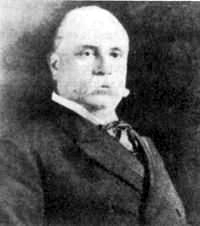
Founded in 1906, the town was the creation of Enrique (Henry) Creel, governor of the State of Chihuahua. He planned to create a mixed colony of Tarahumara and Mexican families, each of which would be given 25 acres of land. When the Tarahumaras refused to participate, the plan failed, but the city of Creel eventually grew to its present population of 5,000.
History paints Creel as a brilliant entrepreneur, politician, and dreamer, but some view him as an opportunistic scoundrel whose actions added to the poverty that resulted in the Mexican Revolution.
Born into wealth in Chihuahua City on August 30, 1854, Enrique was the son of President Lincoln’s United States Consul in Chihuahua, Rubén W. Creel, and his Mexican wife.
After a privileged childhood, Enrique married Angela Terrazas, his first cousin and the daughter of Luis Terrazas, one of the wealthiest landowners in Northern Mexico. Together they accumulated a fortune—millions of acres of land, textile mills, railroads, haciendas, and ranches.
When Porfirio Diaz forced his way into the presidency of Mexico in 1876, the wealthy, elite landowners, including the Terrazas and Creels, gained even more wealth. Typical of his political machinations, Diaz appointed Creel a director of the National Company of Dynamite and Explosives. Mexico’s demand for explosives was high because of its mining industry and its army’s need for munitions. The board imposed an 80% import tax on dynamite, which allowed its members to manufacture explosives without competition.
In 1904, Creel became governor of Chihuahua. As governor, he enacted laws that permitted the sale of underutilized community land to outsiders, and many residents became landless laborers. Because of the resulting unemployment and the economic depression of 1907–08, Chihuahua became a center of revolutionary activity.
The revolution broke out in 1910, and three years later, Pancho Villa expropriated much of the Terrazas-Creel wealth. During these turbulent times, Creel moved to the United States. Twenty years later, he returned to Mexico, resumed his banking business and served as advisor to President Obregón. He died on August 18, 1931, at the age of seventy-seven.
During his lifetime Creel was involved in countless corporations and agencies that shaped the development of Mexico’s economy and government, and he served as a member of the Mexican National Congress, Ambassador to the U.S., Governor of Chihuahua, and Minister of Foreign Affairs. He founded scientific societies, banks, telephone companies and railroads, and played an important role in the construction of the Chihuahua al Pacifico Railroad—the scenic portal to Copper Canyon.
Click Here for information on our Copper Canyon Tours.


